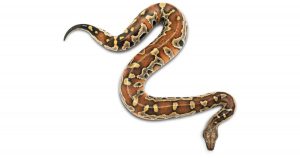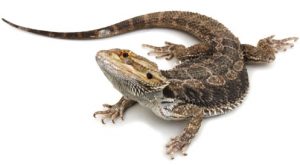Snakes and Lizards
Snakes and Lizards


There are several species of snakes that are commonly kept as pets including king snakes, rat snakes, garter snakes, corn snakes, various pythons (particularly ball pythons), and various boa constrictors (especially the common boa constrictor). The needs of one species may differ from those of another, so be sure to discuss specific questions with a knowledgeable herpetologist (someone who studies reptiles and amphibians) or a veterinarian familiar with reptiles. Most snakes sold as pets are easy to handle and are usually not aggressive. Although certain species of snakes commonly kept by serious reptile collectors have a naturally aggressive nature, these species tend not to show up often in the general pet trade, so they are not typically available in pet stores.
Some characteristics of snakes are:
- Snake’s skin is covered in leathery scales.
- Snakes have coverings over their eyelids called spectacles, instead of eyelids, and their eyes are open all the time.
- Snakes shed their skin every few weeks as they grow.
- Snakes, like all reptiles, are ectotherms, so they are dependent on external or environmental sources of heat to maintain their own body heat.
- Snakes swallow their food whole. There are no vegetarian snakes; all species are carnivores.
- Snakes have a cloaca, a chamber at the hind end of the snake into which the urinary, digestive, and reproductive tracts all empty.
- Snakes have no limbs, but it has been suggested that the two spurs that are present on either side of the vent of boas and pythons represent vestigial limbs.
- Snakes have three-chambered hearts, whereas mammals and birds have four-chambered hearts.
- Snakes have no diaphragm; this prevents them from being able to cough or clear their airways of mucus. As a result, snakes with simple respiratory infections may develop pneumonia.
- Males have two reproductive organs, called hemipenes, which are found just inside the vent.
Lizards have a small head, short neck, and long body and tail. Unlike snakes, most lizards have moveable eyelids. There are currently over 4,675 lizard species, including iguanas, chameleons, geckos, Gila monsters, monitors, and skinks. Lizards have dry, scaly skin that does not grow with their bodies. Instead, most lizards shed, or molt, their old skin in large flakes to make way for the new skin growth underneath.
Lizards are popular prey for many types of predators, from birds of prey to snakes and carnivorous mammals. Their camouflage and ability to stay still for hours helps keep them safe. Several types of lizards are able to escape from an enemy’s grasp by breaking off part of their own tail. The tail has a weak spot just for this purpose. If a predator grabs the lizard by its tail, the tail easily comes off. It can grow back over time, although the tail won’t look quite the same. Different lizard species eat different types of food. Some are predators, eating mammals, birds, and other reptiles. Others are mainly vegetarian, eating leaves, fruits, and flowers.
